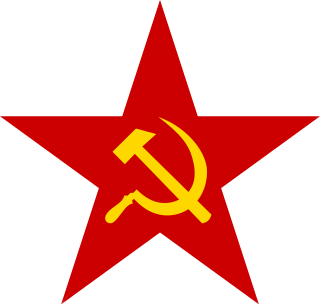| |||||||||||||||||||||||||||||
165 seats in the National Council of Austria 83 seats needed for a majority | |||||||||||||||||||||||||||||
|---|---|---|---|---|---|---|---|---|---|---|---|---|---|---|---|---|---|---|---|---|---|---|---|---|---|---|---|---|---|
| |||||||||||||||||||||||||||||
| |||||||||||||||||||||||||||||
| This article is part of a series on the |
| Politics of Austria |
|---|
 |
Legislature |
| Foreign relations |
The elections to the Austrian National Council held on 25 November 1945 were the first after World War II. The elections were held according to the Austrian election law of 1929, with all citizens at least 21 years old eligible to vote, [1] however former Nazis were banned from voting, official sources putting their numbers at around 200,000. [2]

Austria, officially the Republic of Austria, is a country in Central Europe comprising 9 federated states. Its capital, largest city and one of nine states is Vienna. Austria has an area of 83,879 km2 (32,386 sq mi), a population of nearly 9 million people and a nominal GDP of $477 billion. It is bordered by the Czech Republic and Germany to the north, Hungary and Slovakia to the east, Slovenia and Italy to the south, and Switzerland and Liechtenstein to the west. The terrain is highly mountainous, lying within the Alps; only 32% of the country is below 500 m (1,640 ft), and its highest point is 3,798 m (12,461 ft). The majority of the population speaks local Bavarian dialects as their native language, and German in its standard form is the country's official language. Other regional languages are Hungarian, Burgenland Croatian, and Slovene.

World War II, also known as the Second World War, was a global war that lasted from 1939 to 1945. The vast majority of the world's countries—including all the great powers—eventually formed two opposing military alliances: the Allies and the Axis. A state of total war emerged, directly involving more than 100 million people from over 30 countries. The major participants threw their entire economic, industrial, and scientific capabilities behind the war effort, blurring the distinction between civilian and military resources. World War II was the deadliest conflict in human history, marked by 50 to 85 million fatalities, most of whom were civilians in the Soviet Union and China. It included massacres, the genocide of the Holocaust, strategic bombing, premeditated death from starvation and disease, and the only use of nuclear weapons in war.
National Socialism, more commonly known as Nazism, is the ideology and practices associated with the Nazi Party – officially the National Socialist German Workers' Party – in Nazi Germany, and of other far-right groups with similar aims.
The result was a victory for the Austrian People's Party led by Leopold Figl, which received just under half of the vote and 85 of the 165 seats in the National Council. Despite having a two-seat majority, Figl continued with the three-party grand coalition alongside the Socialists and Communists. However, the Communists who had been equally represented in the Renner government since the end of the war, only received one cabinet post. [3] On 20 December 1945 the Federal Assembly of Austria unanimously elected as President of Austria incumbent Chancellor Karl Renner of the Socialist Party, who swore in Figl as new chancellor on the same day. [4] [5]

The Austrian People's Party is a Christian-democratic and conservative political party in Austria. A successor to the Christian Social Party of the late 19th and early 20th centuries, it was founded immediately following the reestablishment of the Republic of Austria in 1945 and since then has been one of the two largest Austrian political parties with the Social Democratic Party of Austria (SPÖ). In federal governance, the ÖVP has spent most of the postwar era in a grand coalition with the SPÖ. Most recently, it has been junior partner in a coalition government with the SPÖ since 2007. However, the ÖVP won the 2017 election, having the greatest number of seats and formed a coalition with the national-conservative Freedom Party of Austria (FPÖ). Its chairman Sebastian Kurz is the youngest Chancellor in Austrian history.

Leopold Figl was an Austrian politician of the Austrian People's Party and the first Federal Chancellor after World War II. He was also the youngest Federal Chancellor of Austria after the war.
A grand coalition is an arrangement in a multi-party parliamentary system in which the two largest political parties of opposing political ideologies unite in a coalition government. The term is most commonly used in countries where there are two dominant parties with different ideological orientations, and a number of smaller parties that have passed the election threshold to secure representation in the parliament. The two large parties will each try to secure enough seats in any election to have a majority government alone, and if this fails each will attempt to form a coalition with smaller parties that have a similar ideological orientation. Because the two large parties will tend to differ on major ideological issues, and portray themselves as rivals, or even sometimes enemies, they will usually find it more difficult to agree on a common direction for a combined government with each other than with smaller parties.
The Communists only gained four seats, which some blamed on the conduct of the Red Army in the Soviet occupied zone of Austria. [6] The Communists had assured the Soviets that they could win as much as 30 percent of the vote. This proved to be the beginning of a long decline for the Communists, though they stayed in the chamber until May 1959.

The Workers' and Peasants' Red Army, frequently shortened to Red Army was the army and the air force of the Russian Soviet Federative Socialist Republic, and, after 1922, the Union of Soviet Socialist Republics. The army was established immediately after the 1917 October Revolution. The Bolsheviks raised an army to oppose the military confederations of their adversaries during the Russian Civil War. Beginning in February 1946, the Red Army, along with the Soviet Navy, embodied the main component of the Soviet Armed Forces; taking the official name of "Soviet Army", until its dissolution in December 1991.

The Allied occupation of Austria started on 27 April 1945 as a result of the Vienna Offensive and ended with the Austrian State Treaty on 27 July 1955.














